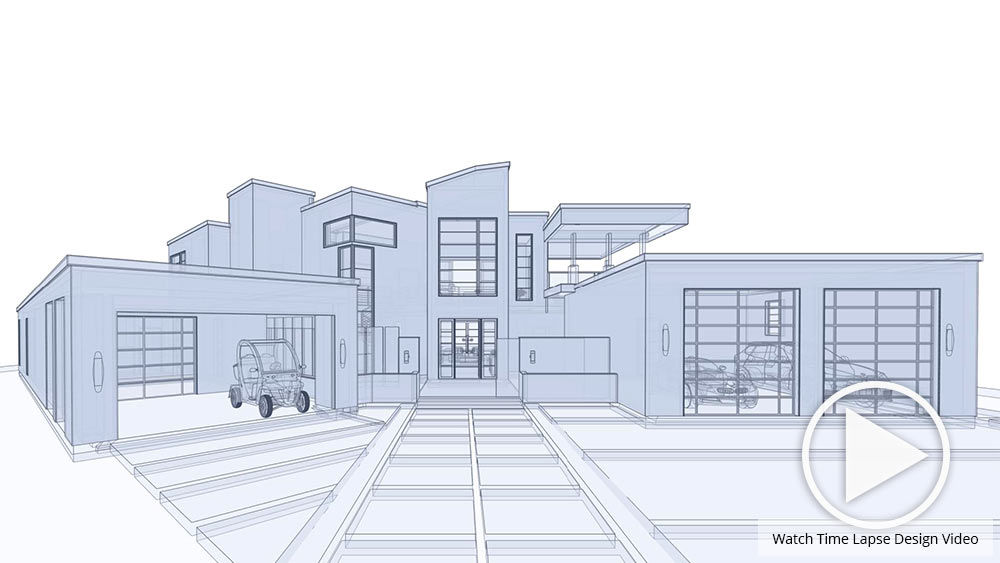The Impact of Technical Advancements on the Style Practices of Contemporary Architects
The fast evolution of technological tools has significantly improved the design landscape for modern architects, fostering extraordinary levels of development and sustainability. Checking out these dynamics exposes a nuanced interaction in between modern technology and typical style techniques, prompting a more detailed assessment of what the future holds for building practices.
Advancement of Architectural Devices
Exactly how have architectural devices changed the layout and construction processes over the centuries? The advancement of building tools has dramatically impacted the efficiency, precision, and creative thinking of design and construction.
With the advent of the Renaissance, the intro of the compass and the protractor marked an essential change. These tools enabled engineers to attain higher accuracy in their layouts, helping with the appearance of even more intricate and proportionate buildings. The Industrial Transformation additionally transformed building practice with the intro of mechanical tools and materials, permitting for larger and more enthusiastic tasks.
In the 20th century, the advancement of computer-aided layout (CAD) software application changed the landscape once more, giving architects with unprecedented capabilities in modeling and visualization. Today, advanced tools such as Building Details Modeling (BIM) and parametric layout software proceed to press the borders of building advancement, enabling a more incorporated method to design and construction processes.
Improved Collaboration in Layout
As modern technology continues to advance, improved cooperation in design has come to be a foundation of modern building method. The combination of electronic devices such as Building Details Modeling (BIM), cloud-based systems, and progressed visualization software application has transformed the way engineers, engineers, and stakeholders connect throughout the design procedure. These devices promote real-time communication, enabling teams to share concepts, modifications, and feedback instantaneously, no matter geographical place.

Furthermore, interdisciplinary partnership has been structured via these technical innovations, enabling architects to function extra closely with various other specialists, such as city planners and ecological specialists. The outcome is a much more natural strategy to create that considers numerous point of views and expertise. Inevitably, boosted cooperation in design is not simply a pattern; it is important for producing cutting-edge, functional, and cosmetically pleasing architecture in a significantly complicated globe.

Sustainability With Innovation
Sustainability in architecture has actually increasingly come to be intertwined with technical development, my sources driving the market toward eco accountable methods. Contemporary engineers are leveraging advanced modern technologies to reduce environmental influence while enhancing the performance of structures. cda architects. One noticeable example is using Structure Details Modeling (BIM), which permits accurate planning and source allowance, lowering waste throughout construction and advertising energy efficiency throughout a building's lifecycle
Additionally, smart products and energy-efficient systems are being incorporated into styles to maximize resource usage. Technologies such as solar batteries and eco-friendly roof harness renewable resource resources, adding to minimized carbon footprints. Furthermore, the application of expert system in style processes enables architects to simulate and examine energy intake, directing decisions towards even more sustainable results.
The integration of lasting technologies not only lines up with international environmental goals but additionally satisfies a boosting need from consumers for environmentally friendly solutions. As engineers accept these innovations, the emphasis moves in the direction of producing rooms that are not only cosmetically pleasing but also functionally sustainable, therefore redefining the requirements of modern-day style. By doing this, technology functions as a stimulant for sustainability, allowing architects to develop buildings that respect and improve the all-natural atmosphere.
Obstacles in Application
While technical developments in design hold excellent assurance for enhancing sustainability, their implementation usually runs into considerable obstacles. One main obstacle is the high knowing curve associated with new modern technologies. Engineers and building experts might require comprehensive training to effectively utilize innovative software and devices, which can delay task timelines and increase expenses.
In addition, the assimilation of arising technologies, such as Structure Details Modeling (BIM) and lasting products, frequently necessitates cooperation throughout multidisciplinary groups. This partnership can be prevented by distinctions in expertise, workflows, and communication designs, causing possible disputes and ineffectiveness.

In addition, regulative structures and building regulations might not keep rate with technical developments, developing official statement obscurity and possible conformity issues. This challenge can discourage engineers from completely welcoming new modern technologies, as the threat of non-compliance might surpass the benefits. Therefore, attending to these application obstacles is essential for the successful combination of technical innovations in contemporary architectural practices.
Future Fads in Design
The challenges associated with the execution of brand-new innovations in architecture have motivated a reevaluation of future patterns within the sector - cda architects. As engineers navigate concerns such as sustainability, urbanization, and social equity, they are significantly adopting cutting-edge innovations to enhance design performance and ecological efficiency
One noticeable pattern is the combination of synthetic intelligence (AI) in the style process. AI devices can evaluate large datasets to inform layout choices, improving both creative thinking and functionality. In A Similar Way, Building Info Modeling (BIM) continues to advance, enabling real-time partnership amongst stakeholders and promoting structured task management.
Lasting style methods are additionally gaining energy, with engineers concentrating on flexible reuse and regenerative design concepts that reduce source consumption and waste. The unification of wise products and eco-friendly energy sources will certainly further enhance the durability of structures when faced with climate adjustment.
In addition, the surge of parametric layout enables even more individualized and context-sensitive building remedies (cda architects). By using these innovations, engineers are positioned to produce developed atmospheres that not only deal with the prompt demands of culture however also anticipate future obstacles, thereby redefining the role of design in an ever-changing world
Final Thought
Technological innovations have substantially reshaped architectural design techniques, assisting in boosted accuracy, his comment is here cooperation, and sustainability. The combination of tools such as Structure Information Modeling and parametric layout software program, together with artificial intelligence and wise materials, empowers architects to address complex obstacles a lot more successfully.